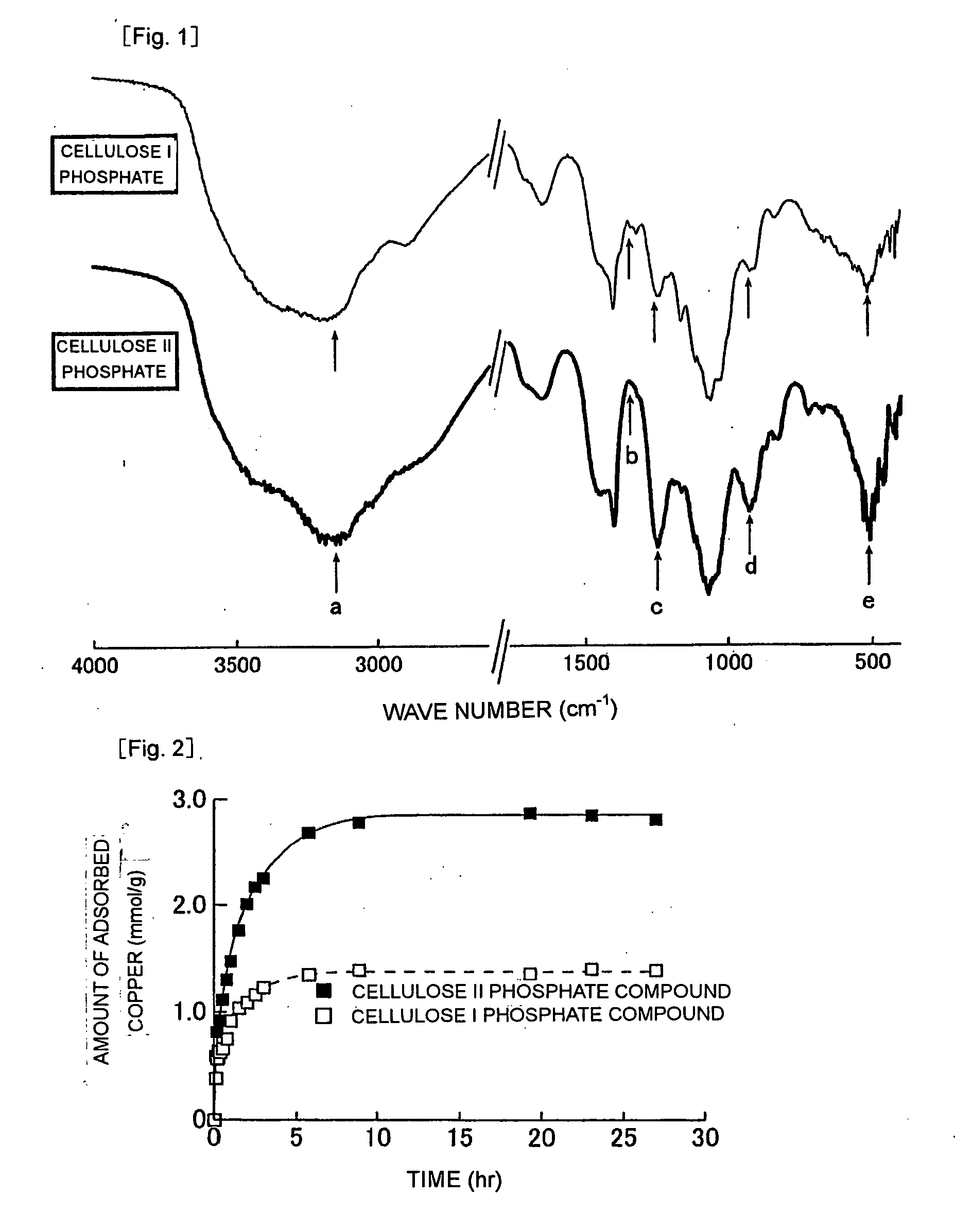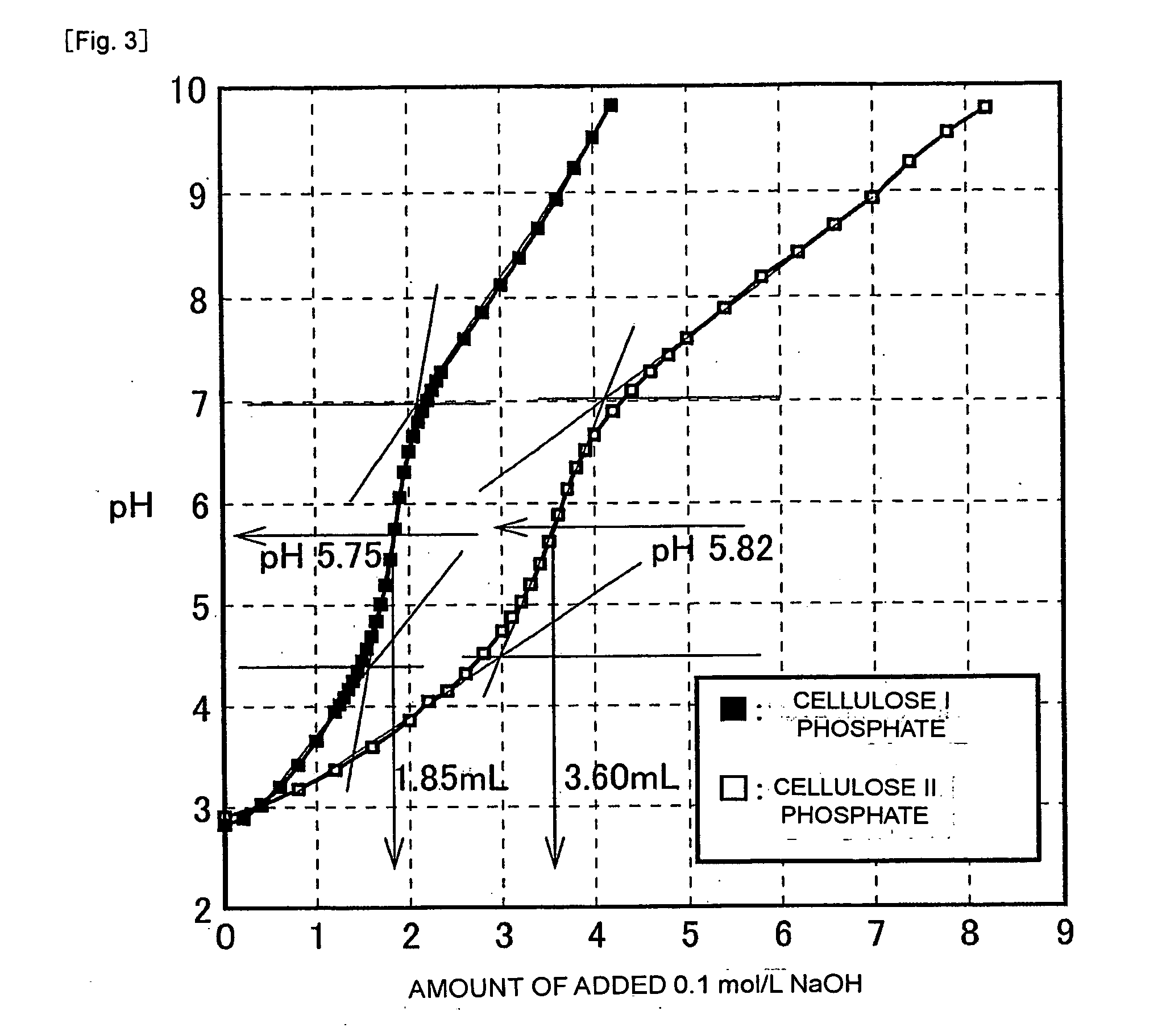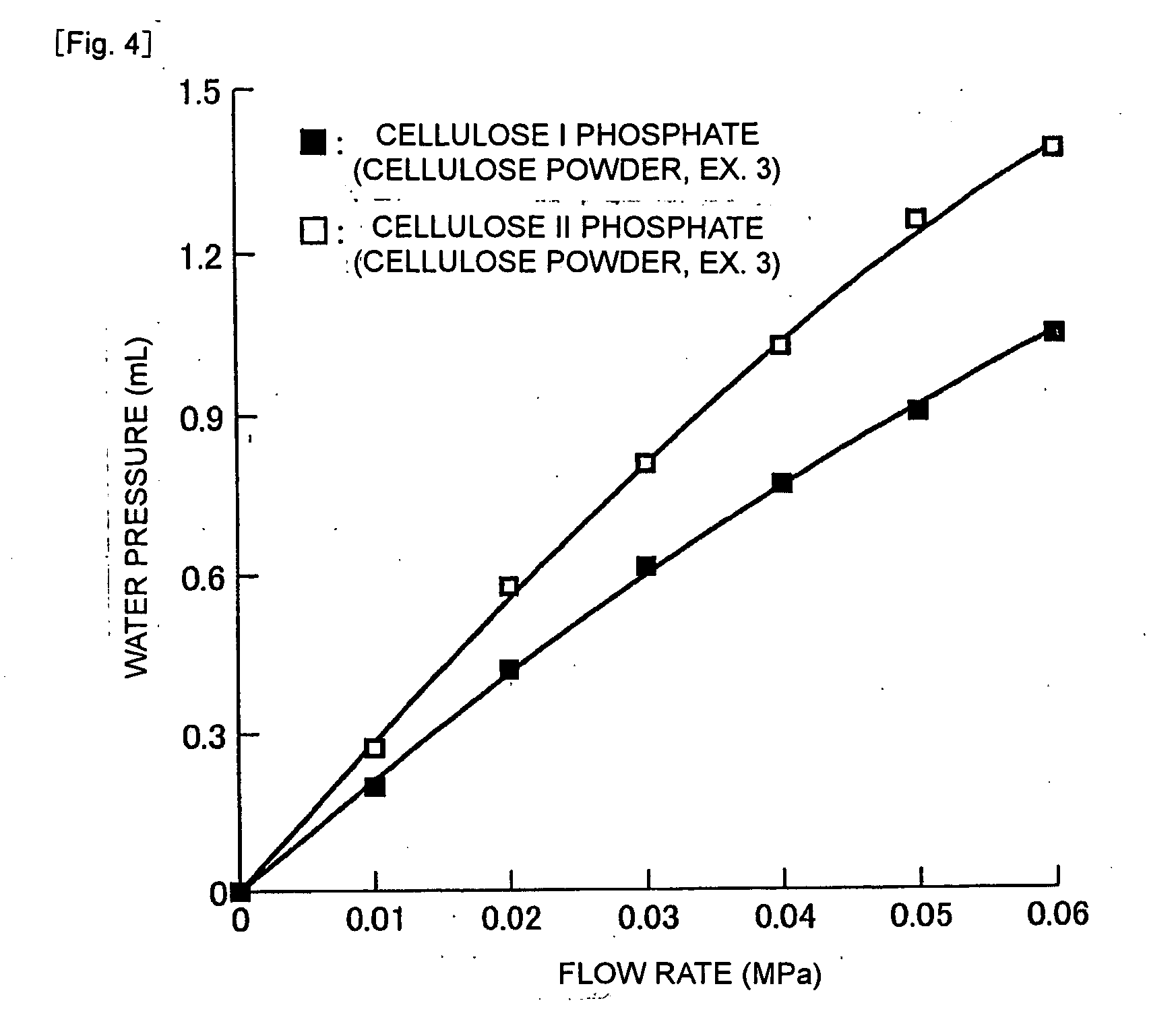Cellulose II phosphate ester and metal-adsorbing material using the same
- Summary
- Abstract
- Description
- Claims
- Application Information
AI Technical Summary
Benefits of technology
Problems solved by technology
Method used
Image
Examples
example 1
[0051] (1) A phosphorylating chemical solution, which had been prepared by dissolving phosphoric acid (0.015 mol), diammonium hydrogenphosphate (0.02 mol) and urea (0.1 mol) in water (15.0 mL), was added to the cellulose II material C (1 g). The thus-prepared mixture was thoroughly mixed, was allowed to stand at room temperature (25° C.) for 1 hour, and then, was completely dried at 90° C. for 6 hours. Subsequently, the mixture was heated to 150° C., followed by a reaction at that temperature for 2 hours. The reaction product was then washed with water and dried (at 70° C.) to afford cellulose II phosphate (fibers).
[0052] (2) The thus-afforded cellulose II phosphate, cellulose I phosphate afforded by phosphorylating natural cellulose fibers (ramie), and their raw materials, i.e., cellulose II and cellulose I (natural cellulose fibers (ramie)), respectively, were each subjected to an elemental analysis. The following results were obtained. [0053] Cellulose II phosphate: C 22.01%, H ...
example 2
[0064] In a similar manner as in the production of cellulose II material B, a cotton fabric was spread in a glass container and the same phosphorylating chemical solution as that employed in Example 1 was poured to soak the cotton fabric with the phosphorylating chemical solution. A phosphorylating reaction was then conducted in a similar manner as in Example 1 to afford a cellulose II phosphate material (knitted fabric).
[0065] The amount of a metal (copper) adsorbed on the thus-afforded cellulose II phosphate was 1.39 (mmol / g) at pH 4.73 and hence, was excellent, while that of cellulose I phosphate afforded by phosphorylating an alkali-untreated cotton fabric was 1.18 mmol / g.
example 3
[0066] A phosphorylating chemical solution, which had been prepared by dissolving phosphoric acid (0.015 mol), diammonium hydrogenphosphate (0.020 mol) and urea (0.1 mol) in water (15.0 mL), was added to the cellulose II material A (1 g). The thus-prepared mixture was thoroughly mixed, was allowed to stand at room temperature (25° C.) for 1 hour, and then, was completely dried at 90° C. for 6 hours. Subsequently, the mixture was heated to 150° C., followed by a reaction at that temperature for 2 hours. The reaction product was then washed with water and dried (at 70° C.) to afford cellulose II phosphate (powder).
[0067] The amount of a metal (copper) adsorbed on the thus-afforded cellulose II phosphate material (powder) was 2.32 (mmol / g) at 4.73 and hence, was excellent, while that of cellulose I phosphate afforded by phosphorylating natural cellulose powder was 1.76 mmol / g.
PUM
 Login to View More
Login to View More Abstract
Description
Claims
Application Information
 Login to View More
Login to View More - Generate Ideas
- Intellectual Property
- Life Sciences
- Materials
- Tech Scout
- Unparalleled Data Quality
- Higher Quality Content
- 60% Fewer Hallucinations
Browse by: Latest US Patents, China's latest patents, Technical Efficacy Thesaurus, Application Domain, Technology Topic, Popular Technical Reports.
© 2025 PatSnap. All rights reserved.Legal|Privacy policy|Modern Slavery Act Transparency Statement|Sitemap|About US| Contact US: help@patsnap.com



